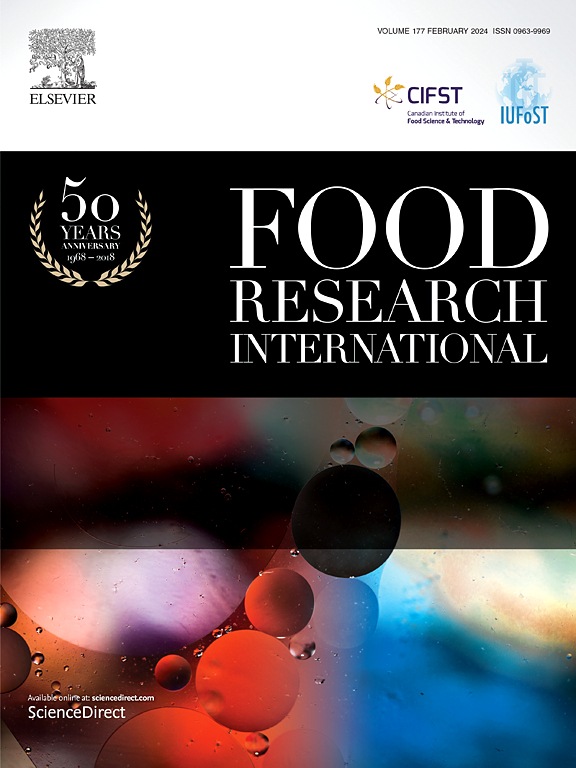肉类胶体科学的创新:从可持续性、健康和个性化的角度探索肉类的未来
IF 8
1区 农林科学
Q1 FOOD SCIENCE & TECHNOLOGY
引用次数: 0
摘要
肉类是营养丰富的重要食物来源。它独特的风味吸引着人们享受美食的乐趣。然而,随着肉类消费的增加,一些关于可持续性、健康和个性化的问题(农业高能耗、肉类高盐/高脂肪对健康的负面影响以及对肉类质地和形状的个性化需求)也出现了。虽然以上问题是从不同的角度提出的,但这些问题在未来的肉胶体模型框架(连续分散阶段)中都可以得到解决。本文综述了三种肉类胶体模型及其在多维打印中的应用。通过完整肉胶体模型的结构,首先比较了培养肉与真实肉的质地差异。然后,讨论了培养肉结构保温系统(连续相)的材料特性。在腊肉胶体模型的基础上,总结了稳定分散相的方法,以解决因减盐引起的腊肉品质恶化问题。第三,在乳状胶体模型中,介绍了脂肪与摩擦学的关系,讨论了分散相可控聚结制备脂肪替代品的方法。最后总结了三种胶体模型在3/4/5D打印中的应用,实现了个性化的纹理和形状。综上所述,三种胶体模型可以简化复杂的肉类体系,便于后续的理论研究。多维打印技术还可以实现虚拟思想对胶体模型的逼真应用。本文章由计算机程序翻译,如有差异,请以英文原文为准。

Innovations in the meat colloid science: Exploring the future of meat from the perspectives of sustainability, health, and personalization
Meat is an important food source with rich nutrition. Its distinctive flavor attracts people to enjoy the pleasure of food. However, some problems about sustainability, health, and personalization (high energy consumption in farming, negative effects of high salt/fat in meat on health, and the personalized demand for meat texture and shape) arise with meat consumption. Although the above problems are put forward from different perspective, these problems can be solved in the model framework (the continuous and dispersed phase) of meat colloid in the future. In this review, three meat colloid models and their application in multidimensional printing are discussed. Through the structure of intact meat colloid model, the texture differences between cultured meat and real meat are first compared. Then, the material characteristics of the structure holding system (the continuous phase) of cultured meat are discussed. Based on the cured meat colloid model, the methods of stabilizing the dispersed phase are summarized to deal with the quality deterioration caused by reducing salt. Third, in emulsion colloid model, the relationship of fat and tribology is introduced, and the preparation of fat substitutes from controllable coalescencing of the dispersed phase is discussed. Finally, the application of three colloid models in 3/4/5D printing are summarized to realize the personalized texture and shape. In conclusion, three colloid models can simplify the complex meat system, which is convenient for subsequent theoretical research. Multidimensional printing technology can also realize the virtual idea to the realistic application of colloid models.
求助全文
通过发布文献求助,成功后即可免费获取论文全文。
去求助
来源期刊

Food Research International
工程技术-食品科技
CiteScore
12.50
自引率
7.40%
发文量
1183
审稿时长
79 days
期刊介绍:
Food Research International serves as a rapid dissemination platform for significant and impactful research in food science, technology, engineering, and nutrition. The journal focuses on publishing novel, high-quality, and high-impact review papers, original research papers, and letters to the editors across various disciplines in the science and technology of food. Additionally, it follows a policy of publishing special issues on topical and emergent subjects in food research or related areas. Selected, peer-reviewed papers from scientific meetings, workshops, and conferences on the science, technology, and engineering of foods are also featured in special issues.
 求助内容:
求助内容: 应助结果提醒方式:
应助结果提醒方式:


